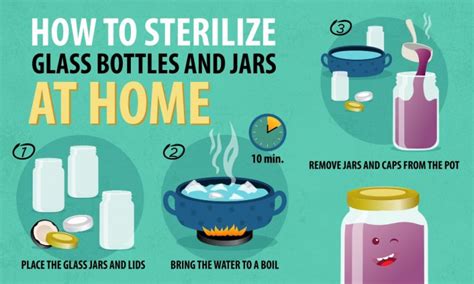How to Sterilize Baby Bottles: A Comprehensive Guide
Sterilizing baby bottles is crucial for protecting your little one from harmful bacteria and ensuring their health. While seemingly straightforward, there are several methods available, each with its own pros and cons. This guide will walk you through the most effective ways to sterilize bottles, helping you choose the best method for your needs and lifestyle.
Why Sterilize Baby Bottles?
Newborns and infants have immature immune systems, making them highly susceptible to infections. Bacteria, viruses, and other microorganisms can easily contaminate bottles and cause illness. Sterilization eliminates these harmful pathogens, preventing potential health problems like diarrhea, vomiting, and ear infections. It's a vital step in ensuring your baby's well-being.
Methods for Sterilizing Baby Bottles
Several methods effectively sterilize baby bottles. Let's explore the most common:
1. Boiling
This is the simplest and most readily available method.
- How to: Submerge clean bottles (and other feeding equipment) in enough boiling water to fully cover them. Boil for at least 5 minutes. Ensure all parts of the bottle are completely submerged.
- Pros: Affordable, effective, and requires no special equipment.
- Cons: Can be time-consuming and may damage certain bottle types (check manufacturer's instructions). Also, it's not ideal for frequent sterilization.
2. Steam Sterilization
Steam sterilizers are electric appliances designed specifically for sterilizing baby bottles and other equipment.
- How to: Follow the manufacturer's instructions carefully. Generally, you place the bottles and parts inside the sterilizer, add water, and turn it on. The steam will kill the germs.
- Pros: Convenient, efficient, and effective. Many models offer automatic shut-off features.
- Cons: Requires purchasing a dedicated appliance, which can be an added expense.
3. Cold Water Sterilization
This method uses sterilizing tablets or solutions.
- How to: Dissolve the sterilizing tablets or solution in cold water according to the product instructions. Submerge the clean bottles and equipment completely and soak for the recommended time.
- Pros: Portable and convenient for travel or when boiling isn't an option.
- Cons: Requires purchasing sterilizing tablets or solutions, which can be more expensive than boiling.
4. Microwave Sterilization
Microwave sterilizers are convenient options for quick sterilization.
- How to: These usually involve placing bottles and parts into a specialized container, adding water, and microwaving according to the instructions.
- Pros: Fast and convenient.
- Cons: Requires a microwave and a specialized sterilizer. Not all bottles are microwave-safe, so always check the manufacturer's instructions.
Choosing the Right Method
The best method for sterilizing baby bottles depends on your individual circumstances and preferences. Consider factors like:
- Budget: Boiling is the most affordable option.
- Convenience: Steam sterilizers and microwave sterilizers offer the most convenience.
- Time: Boiling and steam sterilization require more time than cold water sterilization.
- Bottle type: Check your bottle manufacturer's recommendations to ensure compatibility with different sterilization methods.
Maintaining Hygiene Beyond Sterilization
Sterilizing is a key step, but it's only part of the equation. Remember to:
- Wash your hands thoroughly before handling bottles and feeding equipment.
- Use hot, soapy water to wash bottles and nipples after each use.
- Air dry bottles and equipment on a clean surface.
By following these tips and choosing the sterilization method that best suits your needs, you can ensure your baby's bottles are clean, safe, and ready for feeding. Remember to always refer to the manufacturer's instructions for your specific bottles and sterilizer.
